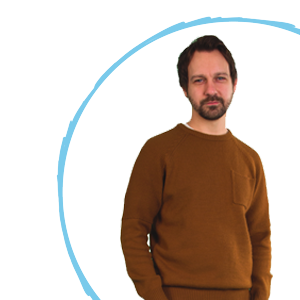
In my blog post last week I talked about recording the audio for our latest feature film, which is a completely improvised film with no script, just characters who meet at a tree in a field and essentially have a completely unscripted conversation. Even we didn’t know what they were going to say and our job was to record it, which as you can imagine was a bit of a mission!
We placed multiple mics around the location itself and the two actors also wore lapel mics that were discreetly hidden under the tops they were wearing. The lapel mics were initially considered more of a backup solution, just in case the other mics didn’t pick up clearly enough the dialogue. However when importing and syncing the eight different mic sources it became clear that while the six mics placed around the location had captured the dialogue cleanly, none of them had captured the level of detail the lapel mics were giving us.
Before importing and syncing the audio sources I’d imagined we’d be using a blend of mic sources to create the final mix itself, but there were phasing issues, and the sources themselves sounded too different from each other to easily swap back and forth between different mics. It would’ve been a bit of a nightmare trying to select the best source for each line, then also have to try and EQ each mic so that they all sounded cohesive and natural to listen to.
The other option was to simply pick the best source, which was clearly the lapel mics, and to work harder on getting those to sound as good as they can. For the most part this method makes it a lot easier to achieve more, faster. I applied simple compression, EQ and basic gates to each lapel mic source and then proceeded to listen though to the tracks individually, adjusting the setting for the inserts as and when each required it. After approximately fifteen to twenty minutes I’d heard as much as I was going to in terms of range of dynamics and volume, so I was confident the setting of the compressors, EQ’s and gates would be good enough to do the job of keeping the sound mix of the film under control.
The next step was to painstakingly go through the two tracks individually again, picking out all of the pops, clicks, interference and general rustle and noise on each lapel mic track. For some reason one mic was particularly prone to interference noise, while the other was more prone to clicks and pops? Either way, I used good old-fashioned cut and paste techniques to cover up any noises I didn’t want to hear. There were lots of moments of silence between the actor’s dialogue where I was able to steal snippets of “silence” to paste over random clicks and pops.
The actors were also sat close enough to be able to dip the volume of one mic and bring up the other mic momentarily, where I needed to cover a click or pop that occurred when an actor was speaking.
Probably the biggest challenge is wind and plane noise. It’s random, can sometimes completely cover a line of dialogue if its loud enough, and worst of all happens just when you don’t want it to! I used EQ as best as possible to reduce the level of wind and plane noise during dialogue, but ultimately in the end we decided that the rustic, gorilla feel that we took to the film meant that leaving some wind and plane noise in actually brought quite a nice texture to the sound mix, especially considering there is nothing else to listen to in the whole feature other than two actors speaking. The film is actually sometimes more about the silence between the lines than the lines themselves as well. Because the actors were improvising every line, there are a lot of beautiful silent sections where you can see the characters thinking about how to respond to what’s just been said. And so all those little things that make up the audio soundscape of the field they were in at the time, the birds, the trees, planes flying overheard, wind, rustle of clothing during movement, these are all the things that make it actually quite an interesting listen as a sound track, rather than simply tidying the whole thing up, whacking some music and audio sfx here and there and just giving audiences exactly what they expected to hear.
We hope it’s a nice refreshing change if and when you ever view the film, to know that every moment you see, and in particular hear, was a natural, organic moment created by the two actors as their characters, and everything you hear is exactly how it happened on the day of filming itself as well.
Phil
